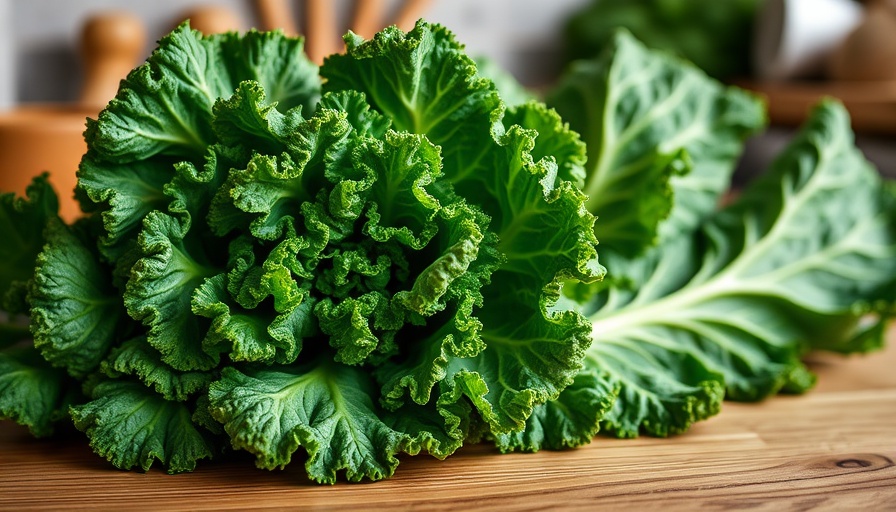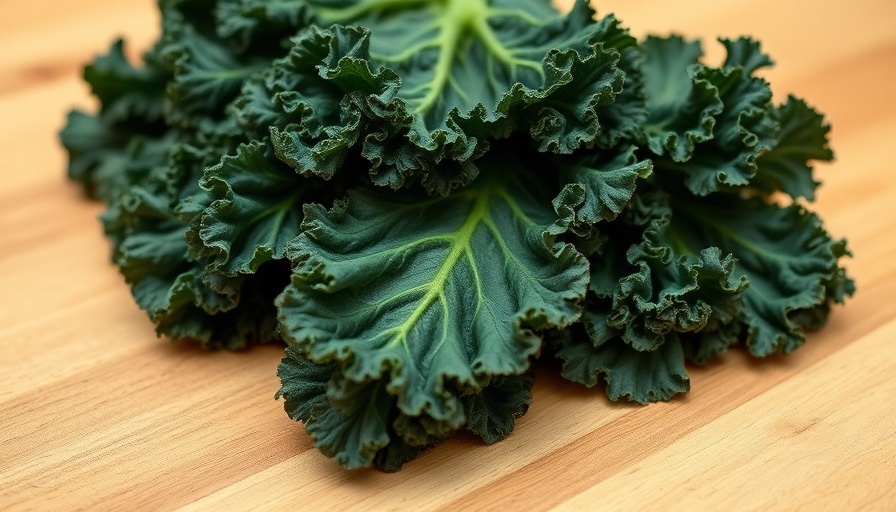
A New Look at Kale: The Versatile Superfood
Kale is more than just a trend; it's a powerhouse ingredient that can transform your meals and promote healthy living. As a parent or someone seeking to improve their eating habits, embracing kale can lead to a nutritious and delicious kitchen experience.
Understanding the Kale Variety Wheel
Whether you're opting for curly kale, Tuscan kale, or even the ornamental varieties, each type brings its own unique flavor and texture to the plate. Curly kale is typically known for its hearty, crisp leaves, making it ideal for salads, while Tuscan kale, with its flatter leaves, offers a sweeter taste that beautifully complements cooked dishes.
As discussed in a piece by Calgary’s culinary community, the young, smaller leaves of kale are tender and perfect for salads, while the more mature leaves are best utilized in cooked dishes or through preparation techniques like massaging. This versatility makes kale an essential part of any home cook's repertoire.
The Crucial Art of Massaging Kale
Have you ever wondered why massaging kale is a game-changer? Massaging not only softens the leaves but also enhances their flavor. This process involves rubbing the leaves with your fingers, which makes them more palatable and less coarse, perfect for salads. However, don't fret if you're in a rush; simply letting the kale sit in a vinaigrette allows the acidity to break down the fibers, resulting in a similarly tender texture, making it an excellent choice for meal prep.
What’s Better: Raw or Cooked?
Knowing when to eat kale raw or cooked can maximize its health benefits. Cooking kale allows for easier digestion and can help unlock various nutrients. However, raw kale retains more vitamin C and other antioxidants. You can alternate between both methods to enjoy the best of what this leafy green has to offer.
Choosing and Storing Your Kale Responsibly
When shopping for kale, look for vibrant, crisp leaves free from any bruises or blemishes. Purchasing from local farmers' markets not only supports your community but often ensures fresher produce. Once you have your kale, store it in a breathable bag in your fridge to maintain its freshness for longer. Keep in mind that the longer kale is stored, the more bitter it tends to become.
Adding Kale to Your Daily Routine
Incorporating kale into your diet doesn’t have to be daunting. Simple methods like tossing it in stir-fry, mixing it into smoothies, or using it as a base for a hearty salad can make it a staple. For those busy weeknights, consider making a batch of warm kale coconut tomato salad using cherry tomatoes and your other favorite ingredients; it’s delicious, simple, and family-friendly.
Real-Life Benefits of Choosing Kale
Kale is a nutrient-dense superfood loaded with vitamins A, K, and C, plus minerals like calcium and potassium. This makes it a great addition to both kids' and adults' diets. Furthermore, research suggests that consuming leafy greens like kale can lead to improved heart health, better digestion, and enhanced immunity.
Frequently Asked Questions About Kale
If you're still unsure about using kale in your home cooking, you're not alone! Common questions often include how to properly wash and prepare it and what the best recipes are for beginners. Start with these basic guidelines: wash your leaves thoroughly to remove any grit, and don’t be afraid to get creative with your ingredients. Staple items like garlic, olive oil, and nuts pair wonderfully with kale.
Conclusion: Embracing a Healthier Lifestyle with Kale
Kale offers a myriad of benefits—from nutritional value to culinary flexibility. As we shift towards fresh, local produce this spring, let kale show you just how enjoyable and healthy cooking can be. The next time you're in the kitchen, remember to give kale a chance; it could be the star ingredient you've been searching for!
 Add Row
Add Row  Add
Add 




 Add Row
Add Row  Add
Add 

Write A Comment